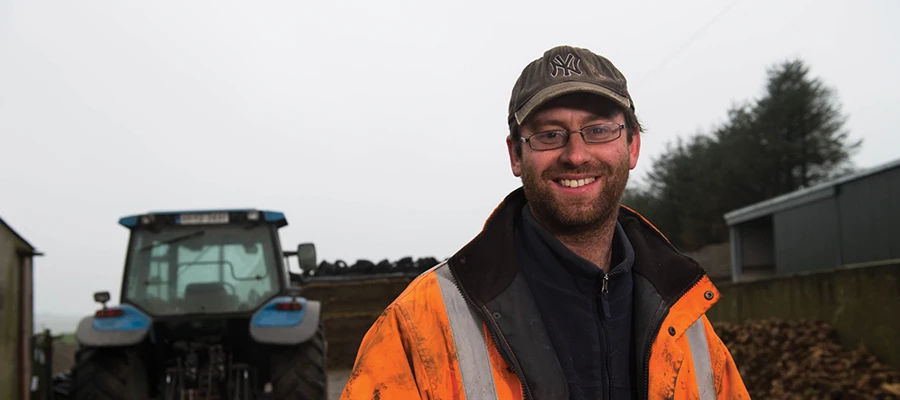Actisaf® helps manage the cow to maximise output from grazing
Adrian O’Driscoll has a real focus on doing what’s right for his cows from a nutrition point of view and is confident that this approach pays dividends.


“It feels like a lot of farmers focus on grazing more than on the cows and are reluctant to buffer feed or feed in the parlour from a cost point of view,” he explained. “I’m happy to feed my cows to get milk, body condition and fertility, whilst also focusing on managing my grazing platform as effectively as possible.”
Adrian runs a herd of 70 cows near Drinagh in County Cork, which is block spring calving. This year he started calving in late January and had 55 cows calved in the first three weeks, with those cows averaging 30 litres/day in that period. He aims for a 16 week breeding period each year, with the majority calving within 12 weeks, and this year 90 per cent will calve within an eight week block, so he is pretty comfortable with cow fertility performance.
“I feed cows well after calving to get them in good condition for bulling and the cows are bulling strongly already,” he explained. “I haven’t turned them out to grass as yet as I have a limited land area available to me, and if I chew it up early in the season then it impacts on grazing for the whole year.”
Adrian’s herd achieves milk quality of 4.16 per cent fat and 3.48 per cent protein and with cows peaking at 32.5 litres/day last year, he is producing more than 500kg of milk solids a year. Dry cows are fed a ration comprising grass silage, straw and minerals, with any cows that look a bit thin getting 1kg/head/day of a dry cow ration.
Milking cows are fed a TMR comprising 73 DMD grass silage, 14kg of forage beet, 2kg of a rolled barley/maize meal mix, along with 6kg of an 18 per cent crude protein nut through the parlour. When cows go out to grazing, usually in early March, Adrian continues to supplement them with a nut through the parlour, although this reduces to a 14 per cent crude protein nut once they are grazing full time.
“I think it is important to keep supplementing cows at grass to maintain performance and I definitely get a yield response to the feed I give through the parlour,” Adrian explained. “We only average around 1 tonne of feed/cow/year, so we are not feeding a lot, but the benefits far outweigh the costs in my opinion.”
One issue that Adrian has seen in the past when grazing is variable milk fat and protein levels as well as loose dung, particularly when he gets to the second round of grazing and grass is lush and leafy.
“I was advised to try adding Actisaf® live yeast to our parlour nut to help address these issues,” Adrian said, “and I’ve been really pleased with the results.”
“Cows seem to transition on to grazing better with Actisaf® in the feed and milk solids are much more consistent throughout the grazing season. I’ve also noticed that cows seem to be much calmer and dung consistency is significantly better too.”
Overall then, Adrian seems to have a system that works for his business and keeps his cows in good condition.
“Our approach might be a bit different in that we don’t just focus on what we can get from grazed grass, but cow health is good and feeding Actisaf® seems to keep the cows performing consistently throughout the year,” he concluded.
